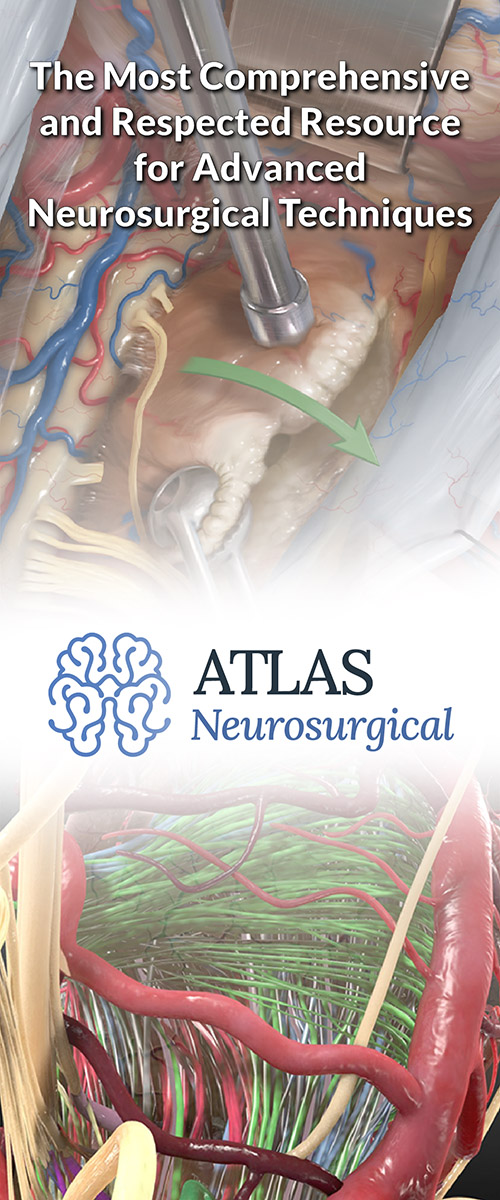Overview of Pineoblastoma
Pineoblastoma is a rare and aggressive brain tumor that arises from the pineal gland, a small gland located deep within the brain. This gland is involved in the regulation of sleep by secreting melatonin.
Pineoblastomas are fast-growing tumors that can spread to other areas of the brain and spinal cord, primarily affecting children but also seen in adults. While accounting for less than 1% of all brain tumors, they make up a higher percentage of childhood brain tumors, highlighting their significance in pediatric neuro-oncology.
Because of its location and aggressive nature, early detection and treatment are critical. This article provides a comprehensive overview of pineoblastoma, covering symptoms, causes, diagnosis, treatment options, prognosis, and strategies for living with the condition. Understanding these aspects can empower patients, caregivers, and families to navigate this complex journey.
What is Pineoblastoma?
Pineoblastoma is considered a type of primitive neuroectodermal tumor (PNET), which means it develops from immature cells. It is a rare central nervous system (CNS) tumor that tends to grow rapidly and can spread to other parts of the CNS through the cerebrospinal fluid (CSF).
While the exact causes of pineoblastoma remain unknown, researchers believe it can result from abnormal cell development in the pineal gland. Studies looking into the genetics of pineoblastoma have shown that certain inherited conditions, such as retinoblastoma (a rare eye cancer), may increase the risk of developing this tumor. This connection hints there could be a genetic component to its development, and is an area of ongoing investigation.
Pineoblastoma Symptoms
The symptoms of pineoblastoma are generally related to its location in the brain and the way it affects surrounding structures. Because the pineal gland is positioned near the fluid pathways of the brain, symptoms often result from the tumor obstructing the flow of CSF, leading to increased pressure in the brain. Common symptoms of pineoblastoma include:
- Persistent headaches, which may worsen in the morning or when lying down
- Nausea and vomiting, especially in the morning
- Difficulty with eye movements, double vision, or blurred vision
- Problems with balance and coordination, such as unsteadiness while walking
- Fatigue and weakness, leading to general lethargy
- Sleep disturbances, including difficulty sleeping or excessive sleepiness
In children, pineoblastoma can sometimes affect hormonal balance, leading to early or delayed puberty. These symptoms can vary depending on tumor size and the extent of its spread, and because many of these can mimic other, less serious conditions, early diagnosis is often challenging. The gradual development of symptoms can sometimes lead to delays in seeking medical attention, further complicating timely diagnosis.
Why should you have your surgery with Dr. Cohen?
Dr. Cohen
- 7,000+ specialized surgeries performed by your chosen surgeon
- More personalized care
- Extensive experience = higher success rate and quicker recovery times
Major Health Centers
- No control over choosing the surgeon caring for you
- One-size-fits-all care
- Less specialization
For more reasons, please click here.
Diagnosing Pineoblastoma
The process of diagnosing pineoblastoma typically begins with a neurological exam if patients exhibit symptoms consistent with a brain tumor. Early and accurate diagnosis is essential for guiding effective treatment plans and improving prognosis.
The diagnostic process involves several steps, though specific approaches may vary. The optimal diagnostic plan will be made based on thorough discussions between patients, families, and the healthcare team. Some common diagnostic steps include:
Magnetic Resonance Imaging (MRI)
MRI is the preferred method of imaging for diagnosing pineoblastoma, providing detailed images that help determine the size and location of the tumor. Contrast-enhanced MRIs can further help identify areas of tumor spread and are useful in differentiating pineoblastomas from other types of pineal gland tumors.
Computed Tomography (CT) Scan
Although less detailed than MRI, CT scans may be used if MRI is unavailable. CT scans are especially useful for detecting changes in the tumor components or in emergency situations where immediate imaging is needed.
Biopsy
A definitive diagnosis often requires a biopsy, where a small tissue sample is taken from the tumor and examined under a microscope. This can confirm whether the tumor is a pineoblastoma and reveal its specific characteristics, such as cellular structure and growth patterns. Molecular profiling of the biopsy can provide additional insights that help guide targeted treatments.
Lumbar Puncture (Spinal Tap)
To determine if the tumor has spread, a lumbar puncture may be performed to analyze cerebrospinal fluid (CSF) for tumor cells. This procedure can help assess the extent of CNS involvement, which is critical for staging and planning treatment.
Diagnosis is a crucial step in managing pineoblastoma, and a personalized approach ensures that the chosen diagnostic methods match with the patient’s symptoms, age, and overall health. Open conversations with healthcare providers are vital to addressing any concerns and deciding the most suitable diagnostic tests. This helps families and loved ones feel informed and supported throughout the process.
Stages of Pineoblastoma
Unlike other cancers, brain tumors, including pineoblastomas, are not typically staged in the same way (I to IV stages). Instead, they are classified based on their location, size, and whether they have spread (metastasized) to other areas of the CNS.
- Localized Pineoblastoma: The tumor is confined to the pineal gland without evidence of spreading to other parts of the brain or spinal cord. Early detection of localized tumors can lead to more effective surgical removal.
- Metastatic Pineoblastoma: The tumor has spread to other areas, often via cerebrospinal fluid pathways, affecting regions like the spinal cord or other brain structures. Metastatic pineoblastomas require more intensive treatment approaches and have a more complex prognosis.
- Recurrent Pineoblastoma: If a pineoblastoma returns after initial treatment, it is classified as recurrent. Recurrence may occur at the original site or elsewhere in the CNS, and treatment strategies often depend on the extent and location of recurrence.
Pineoblastoma Treatment Options
Treatment for pineoblastoma usually involves multiple types of therapies, combining surgery, radiation therapy, and chemotherapy to address the tumor comprehensively. The choice of treatment is based on personalized factors such as the patient's age, overall health, tumor location, and the extent of the tumor's spread.
Surgery
The main goal of surgery is to remove as much of the tumor as possible without damaging important brain structures. Complete removal can sometimes be challenging due to the tumor's location deep within the brain.
However, modern surgical techniques, such as endoscopic approaches and neuronavigation, have made it easier to access these difficult areas safely. In cases where the tumor causes fluid buildup in the brain (hydrocephalus), surgery may also involve placing a shunt or an endoscopic third ventriculostomy (ETV) to drain excess fluid and relieve pressure.
Radiation Therapy
After surgery, patients typically receive radiation therapy to target any remaining cancer cells, helping to shrink the tumor and prevent recurrence. Proton therapy, a more precise form of radiation, is sometimes used to minimize damage to healthy tissue, particularly in children.
Radiation therapy may be administered to the entire brain and spinal cord if there is a risk of metastatic spread.
Chemotherapy
Chemotherapy uses drugs to kill cancer cells or stop them from dividing. This can be particularly useful if the tumor has spread or if the tumor is not responding to surgery and radiation alone.
Some patients may receive high-dose chemotherapy followed by stem cell rescue to allow for more intensive treatment. The drugs used are carefully chosen based on the patient’s age and tumor characteristics to improve success and minimize side effects.
Clinical Trials
Ongoing research into new treatments for pineoblastoma may offer additional options, particularly for those whose tumors do not respond well to standard therapies. Participating in clinical trials can provide patients with access to experimental therapies, including targeted drugs, immunotherapies, and newer radiation techniques, that are still being studied for their effectiveness.
Families interested in learning more about clinical trials should discuss potential benefits and risks with their healthcare team. More information regarding clinical trials can be found here.
Prognosis and Pineoblastoma Survival Rate
Prognosis varies widely based on factors such as the patient’s age, the extent of the tumor, and how well it responds to treatment. Generally, pineoblastomas are known to be aggressive tumors making outcomes difficult to predict. Survival rates tend to be lower for younger children, particularly under four years old, compared to adults due to differences in treatment response and the sensitivity of developing brains to aggressive therapies.
Factors Influencing Survival Rate
The overall survival rate depends on how early the tumor is detected, the success of surgical removal, and whether it has spread. Patients who receive a complete tumor removal followed by radiation and chemotherapy often have a better chance of long-term survival.
Tumor histology, genetic markers, and molecular characteristics can also provide important prognostic information that guides treatment decisions.
Advancements in Treatment
Emerging therapies and improved surgical techniques have led to more favorable outcomes for many patients, and ongoing research continues to test new ways to improve survival rates and life expectancy. Advances in our understanding of cell biology have allowed for the development of personalized treatment approaches, helping clinicians tailor therapies to the specific characteristics of a patient’s tumor.
Living with Pineoblastoma
Living with a diagnosis of pineoblastoma is challenging, impacting physical, emotional, and mental well-being. Managing symptoms, side effects of treatment, and long-term health requires ongoing support and compassionate care. Patients and caregivers should consider the following strategies to help with this process:
Symptom Management
Treatments like surgery, radiation, and chemotherapy can cause side effects ranging from fatigue and nausea to cognitive challenges. Physicians may prescribe medications or recommend lifestyle adjustments to help manage these symptoms. Regular follow-ups are necessary to monitor health and modify treatment plans as needed.
Emotional and Psychological Support
A diagnosis of a pineoblastoma brain tumor can lead to feelings of anxiety, depression, and uncertainty. Counseling, therapy, and support groups can provide emotional relief, allowing patients and families to share their experiences and receive encouragement from others who understand the challenges this illness can cause.
Quality of Life
While treatments aim to extend life expectancy, maintaining a good quality of life is equally important. Activities like gentle exercise, meditation, and hobbies can promote physical and mental well-being.
Cognitive and physical therapy may also help patients regain skills and improve independence in daily activities.
Long-Term Care
Even after initial treatment, long-term care is essential. This involves regular MRI scans to check for tumor recurrence, monitoring for late effects of treatment, and managing any ongoing health issues.
A multidisciplinary team including neurologists, oncologists, and rehabilitation specialists ensures patients receive comprehensive care.
Current Research and Future Directions
Ongoing research is vital to understanding and treating pineoblastoma. Scientists are investigating new drugs, targeted therapies, and immunotherapies that may offer more effective ways to treat the tumor with fewer negative side effects.
Additionally, advances in genetic research could lead to more personalized therapies that are tailored to the specific molecular profile of each patient’s tumor. Clinical trials remain a key part of this research, providing opportunities for patients to access cutting-edge treatments that may improve outcomes and bring new hope to families.
Key Takeaways
- Pineoblastoma is a rare, aggressive brain tumor of the pineal gland that can quickly spread within the CNS.
- Common symptoms include headaches, nausea, vision issues, and balance problems due to increased brain pressure.
- Diagnosis typically uses imaging, biopsy, and cerebrospinal fluid analysis for accurate early detection.
- Treatment often involves surgery, radiation, and chemotherapy, with clinical trials providing additional options.
- Prognosis varies by age, tumor size, and treatment response; advancements in therapy are improving survival rates, and ongoing care supports quality of life.




